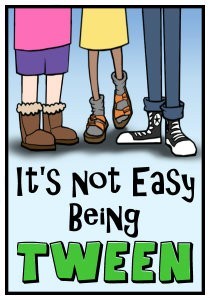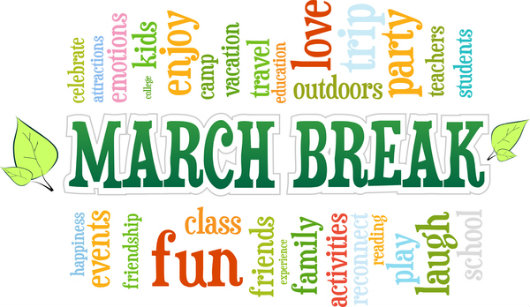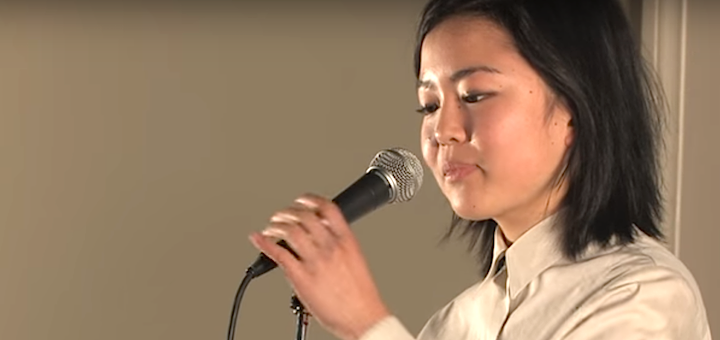Try These Creative Ways to Do Formative Assessment
A MiddleWeb Blog
 Even though I’ve always used activities that “check for understanding” in my classroom, I hadn’t really heard them called “formative assessment” until the mid 2000s during the height of the school reform movement.
Even though I’ve always used activities that “check for understanding” in my classroom, I hadn’t really heard them called “formative assessment” until the mid 2000s during the height of the school reform movement.
The most common definition I see quoted is that of Bill Younglove from Cal State University Long Beach (2011): “the frequent, interactive checking of student progress and understanding in order to identify learning needs and adjust teaching appropriately.”
Formative assessment became a buzzword that turned into practice. When it is used effectively, formative assessment benefits teachers and students alike.
The issue I see is that formative assessment is not often used effectively and, in some cases, not at all. Many times, I see formative assessments used as busywork activities that students are asked to complete, but the teaching is not adjusted appropriately. I’ve also seen these assessments being used as graded assignments, which defeats their purpose.
Formative assessments have also been incorporated into the very popular gamification movement which, unfortunately, often emphasizes competition and quick completion over understanding.
Despite these shortcomings, formative assessment remains a crucial best practice to meet the needs of all learners. I recently ran across a revised definition of formative assessment by the Formative Assessment for Students and Teachers (FAST) State Collaborative on Assessment and Student Standards (SCASS). Their revised definition:
Formative assessment is a planned, ongoing process used by all students and teachers during learning and teaching to elicit and use evidence of student learning to improve student understanding of intended disciplinary learning outcomes and support students to become self-directed learners.
It’s more complex, but to me, this definition reflects my understanding of formative assessment with the end goal of empowering students to own their learning.
To that end, the following are some ways I use formative assessment in my classroom.
Technology-based formative assessments
Quizizz — I was a fan of Quizizz from the start. I love the hilarious, current memes the students receive as feedback for correct answers as well as the ability to create my own. Like most of these online quiz games, it provides immediate, detailed feedback to the teacher. The part of these games I do not like is the competition aspect. I believe that human beings are born with competitive instincts and need to be taught collaboration and self-direction instead.
Competitive and timed activities are fine for students who are successful and have some degree of mastery of the material. They are less exciting, and even anxiety-inducing, for students who have not yet grasped the concepts.
Instead, I turn off the timing and leader-board features and challenge students to try to achieve a certain class percentage (which only I can see and share).
I also love that I can assign these as ungraded homework practice so pupils can play alone at home at their own pace. (Bonus: because it’s free to use, some of my students have even chosen to develop their own quizizz games and shared them with one another.)
Socrative — This is one of the multiple-choice game programs that many of my colleagues enjoy. Again, I turn off the competition features. I display the questions on our big screen along with their being displayed on the students’ screens.
My twist is that I challenge them to achieve 100% correctness on each question and I give them a point each time they do so. They cheer when I click on “How’d We Do?” and it says 100%. I set a goal of their earning a point 80% of the time. This works well because I encourage them to discuss the questions as a group or class before they choose an answer. I love the way they end up teaching each other and reinforcing the concepts while we play.
Word Clouds—this is a great way for them to practice describing attributes of a concept. They each create their own word cloud and then do a gallery walk to look at one another’s designs. Alternatively, they could share their word cloud via Padlet, and it could be saved as a class resource. (There are dozens of ways to use Padlet in the classroom, and it is a wonderful curating tool.) I sometimes extend this by having students share their top words and make a group word cloud. Here are some word cloud generators.
Ungraded feedback—I teach English, so my students write formal pieces several times a year. I have them share these with me via Google docs. I type my comments where I would normally have hand-written them and give students the opportunity to make revisions prior to my assigning a grade.
I also have them grade themselves using the rubric before they see my final assessment. This encourages them to actually read my commentary, and we can discuss ways for them to resolve the issues and improve their pieces. (Bonus: in the Gdoc, I can see when they resolve a comment as well as the revision history.)
NWEA‘s links to technology-based formative assessments — a brilliant and comprehensive list from one of my most trusted education resources.
Technology-free formative assessments
Individual White Boards—I am not sure of the reason, but my students LOVE to write on the white board. There are very rarely opportunities for them to write on the main board, but every time I get out the individual ones, they get excited. It is a real-time way to see what they know, and they have so much fun (as I gather formative insights).
Similes, Metaphors, and Analogies—Two of my favorite education thinker/writers are Kelly Gallagher and Rick Wormeli. Both of them encourage the use of comparison to deepen understanding. It’s fun to see students use all of their creative juices to figure out how an intangible and a tangible object could possibly be related.
By allowing them to develop their own analogies, students are activating higher-order thinking. Example: when studying the parts of the cell, instead of just memorizing them, have students determine a theme such as an amusement park and then determine what part of the park is analogous to each organelle.
Creative Arts—I often allow students to use a doodle, a dramatic scene, or a poem/rap to demonstrate their understanding of a topic. Their creativity never ceases to amaze me.
Most Important/Most Interesting Quote—After reading a section of a text, I ask my students to determine what they believe to be the most important or interesting sentence or passage and be prepared to defend their answer. Then I put them in groups and have them share their individual work.
Working together, they have to agree upon one of these and provide their rationale to the rest of the class. This generates incredible debate and discussion. If they just cannot agree, I have them paraphrase and develop their own sentence.
Incredible Shrinking Text—While reading a non-fiction article or section of a textbook, have students do a first read as they highlight any sentence that they believe is important. Then, depending on the length of the piece, have them narrow this choice down to a certain number of sentences (I often start with ten or fifteen).
Next, they need to work in groups to narrow this down by half. Once the sentences are at a manageable number such as three or four, I have the group compose a one or two-sentence summary of the piece using information from their final sentence list. (Bonus: This is a great way to teach them summarizing and paraphrasing.)
Twenty-five Word Summary—Quite simply, this means they have to summarize an entire piece of text in EXACTLY 25 (or 50) words. This forces them to be very deliberate with their word choice in order to reflect the content of the entire text. This can be extended by having them work as a group to do so.
What’s your favorite formative assessment?
There are so many more examples of formative assessment that can be used, but the above are some of my favorites because they are effective and, more importantly, FUN and popular with kids. Please share your favorite ideas. I look forward to learning with you.
Reference:
Bill Younglove, “(In)Formative Assessment : The Key to Accountability,” California English 17.2 (2011): 21-23.







































